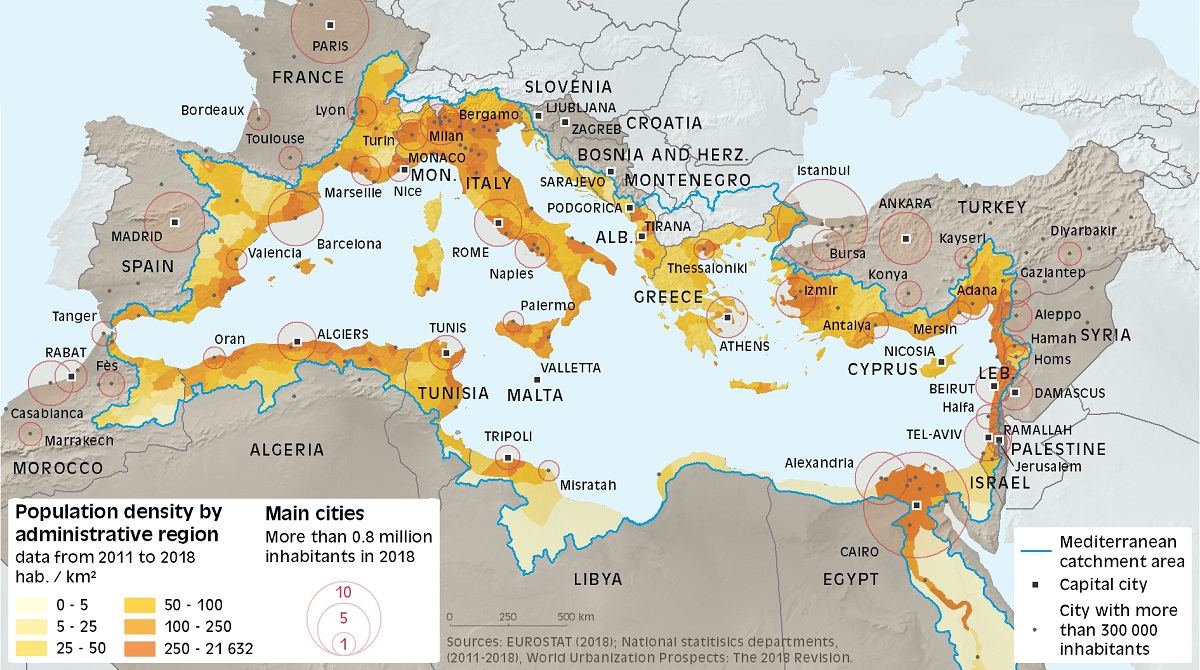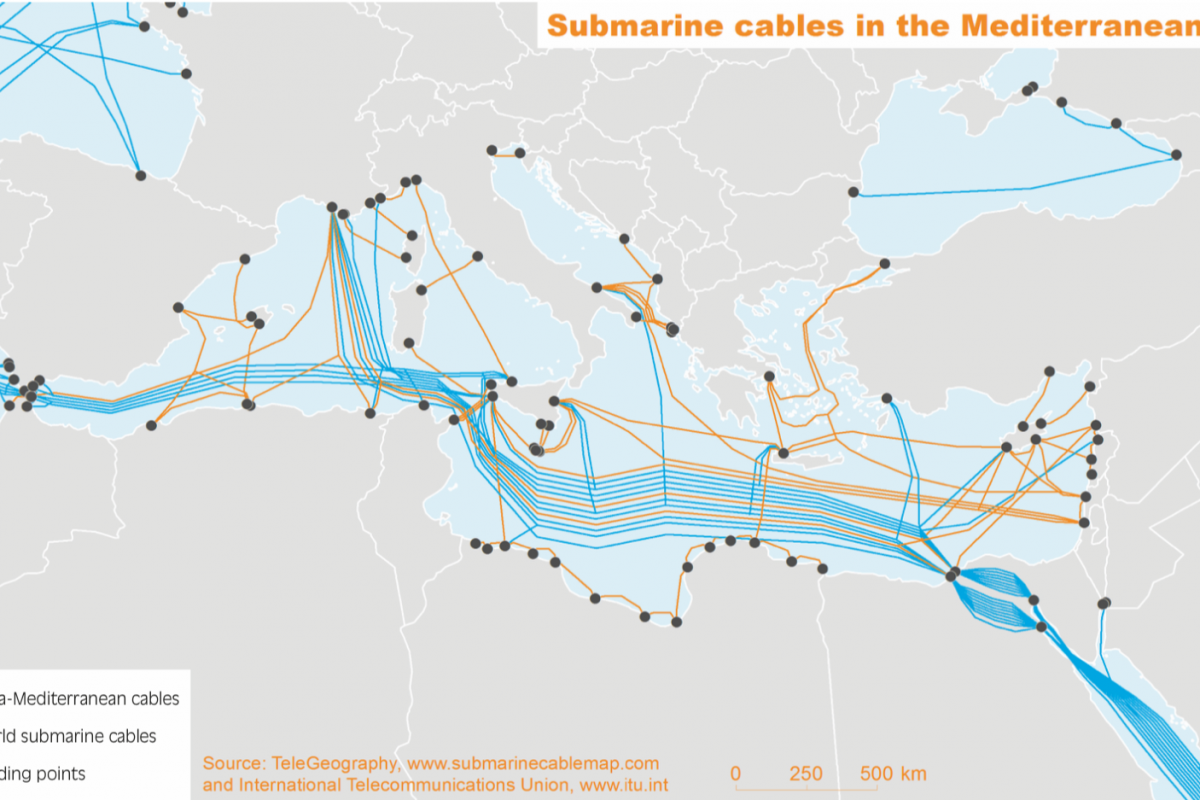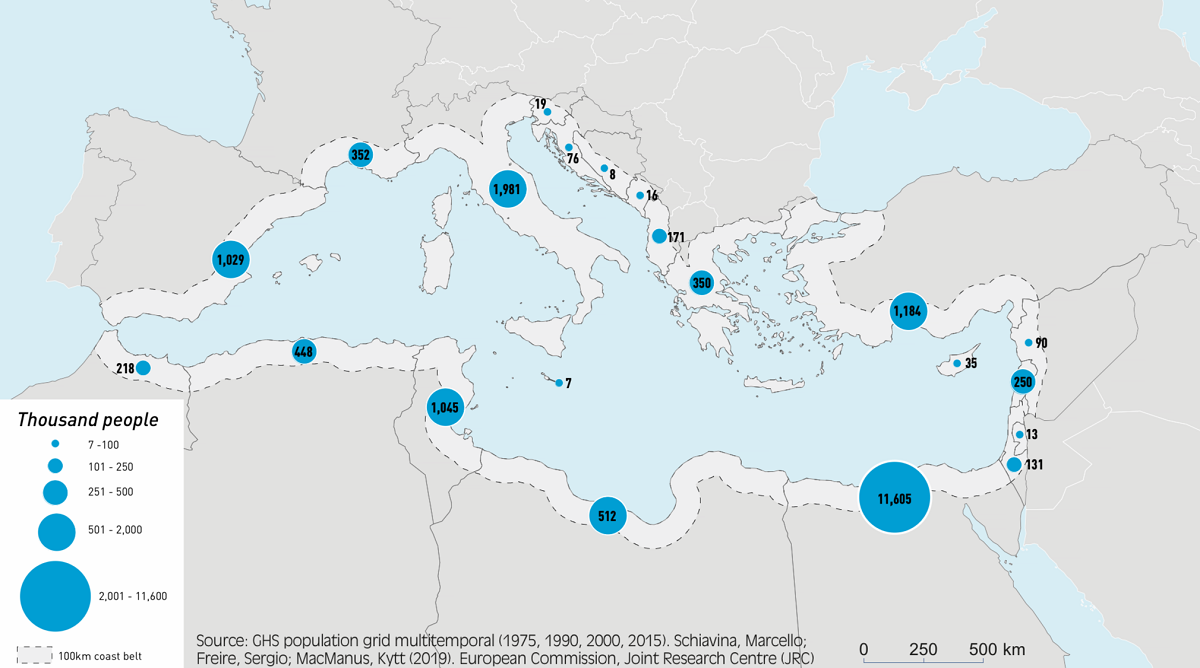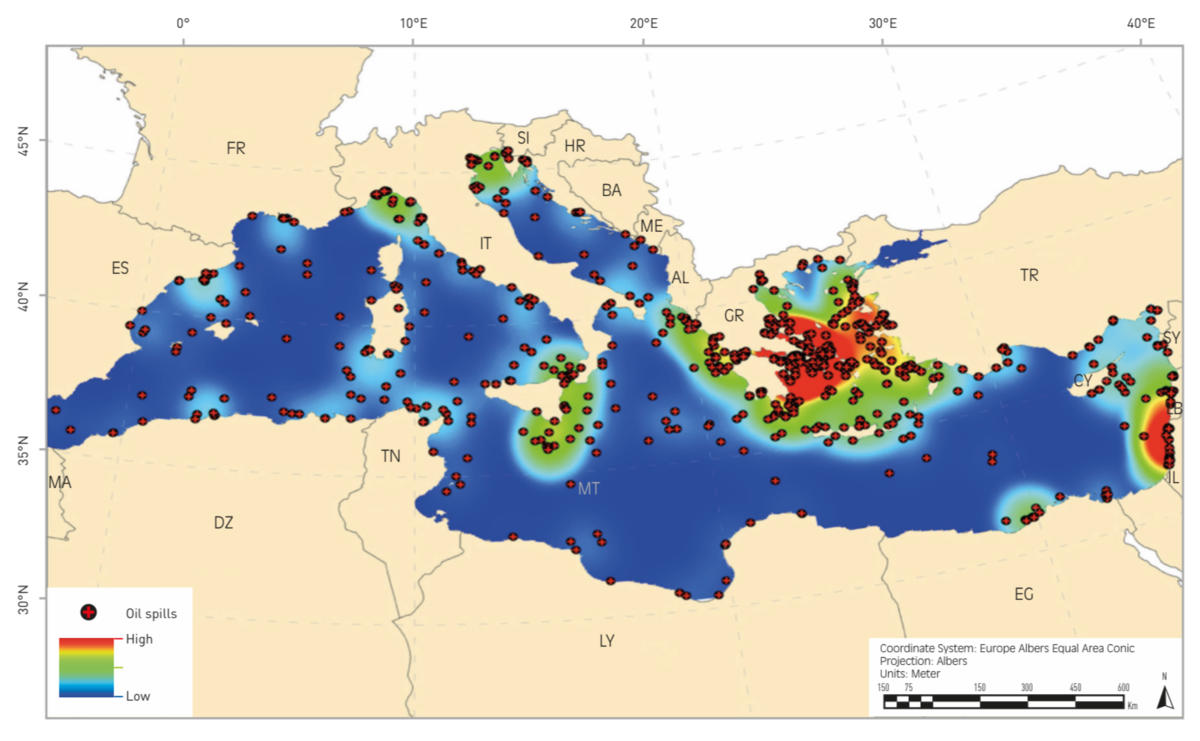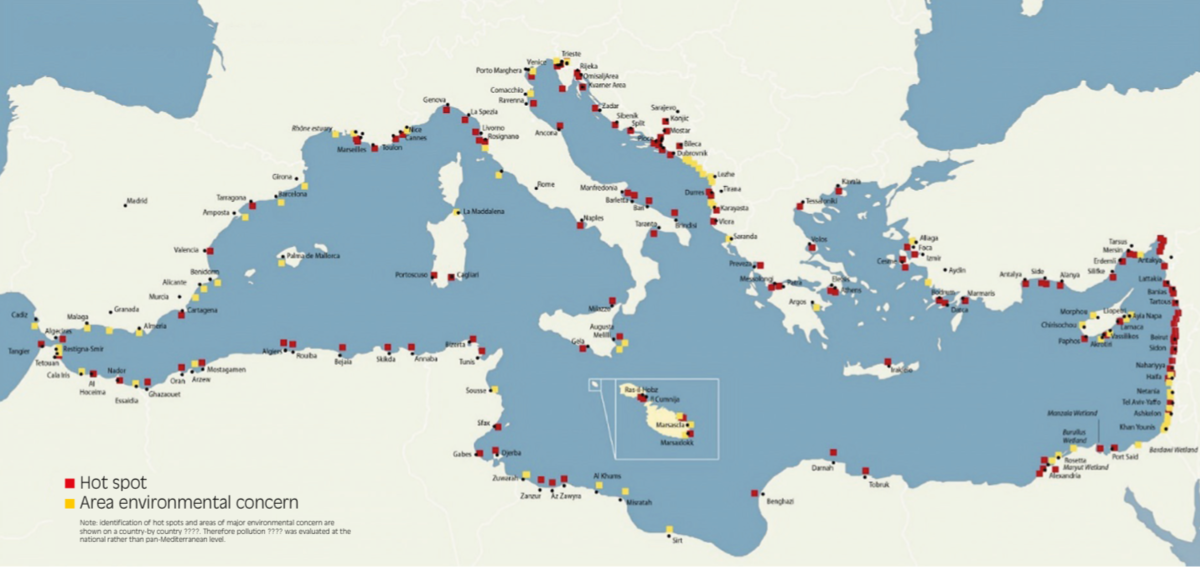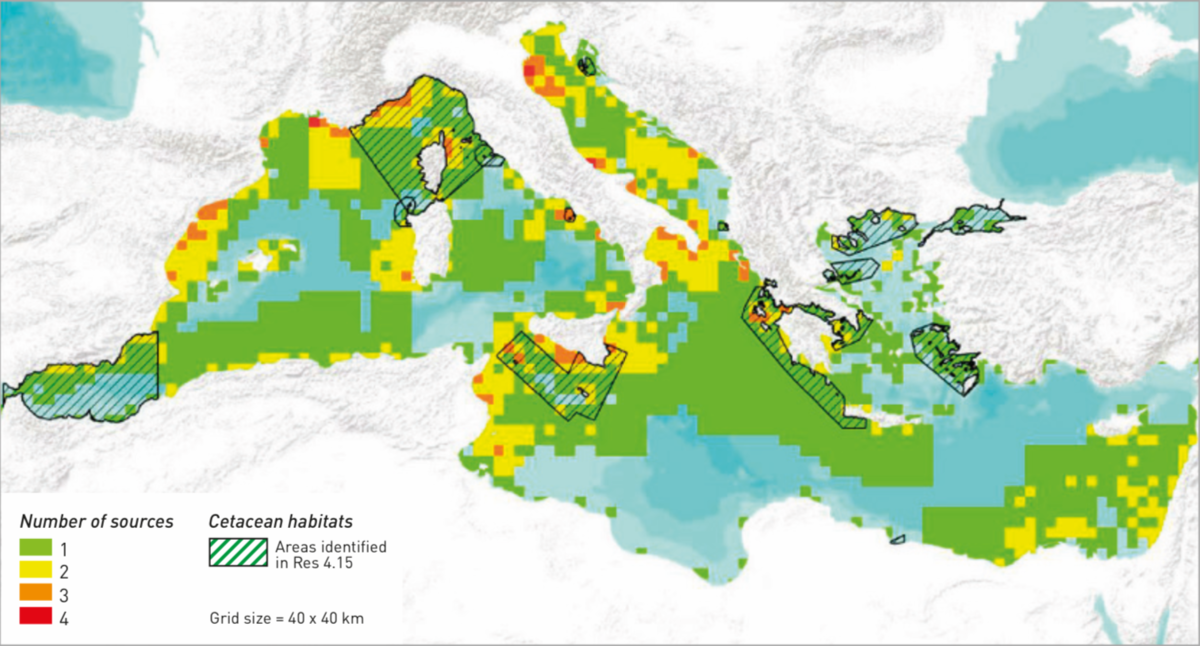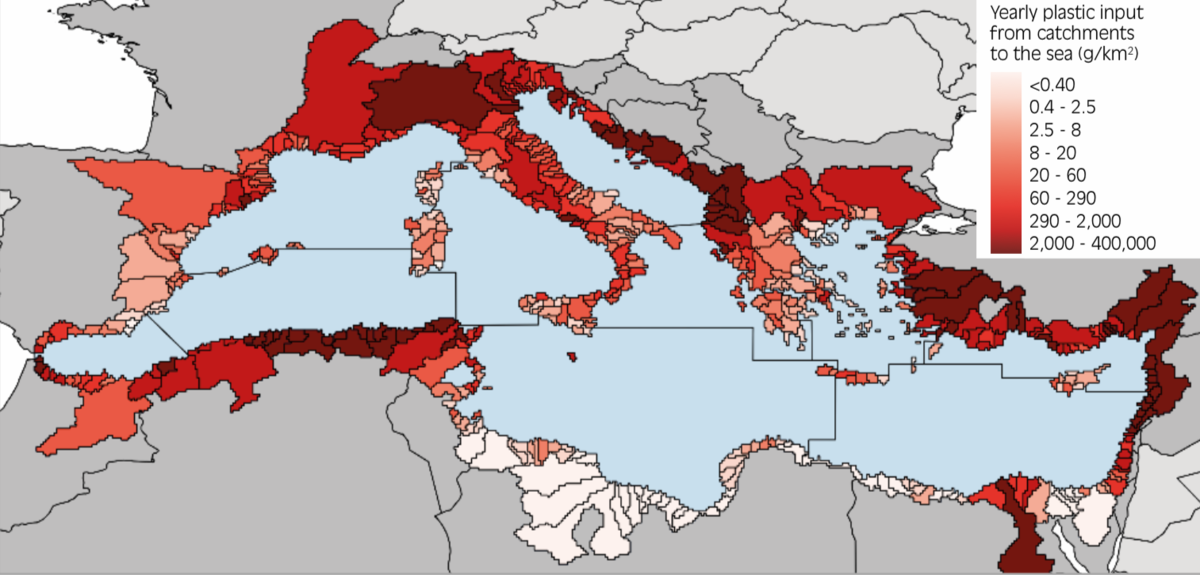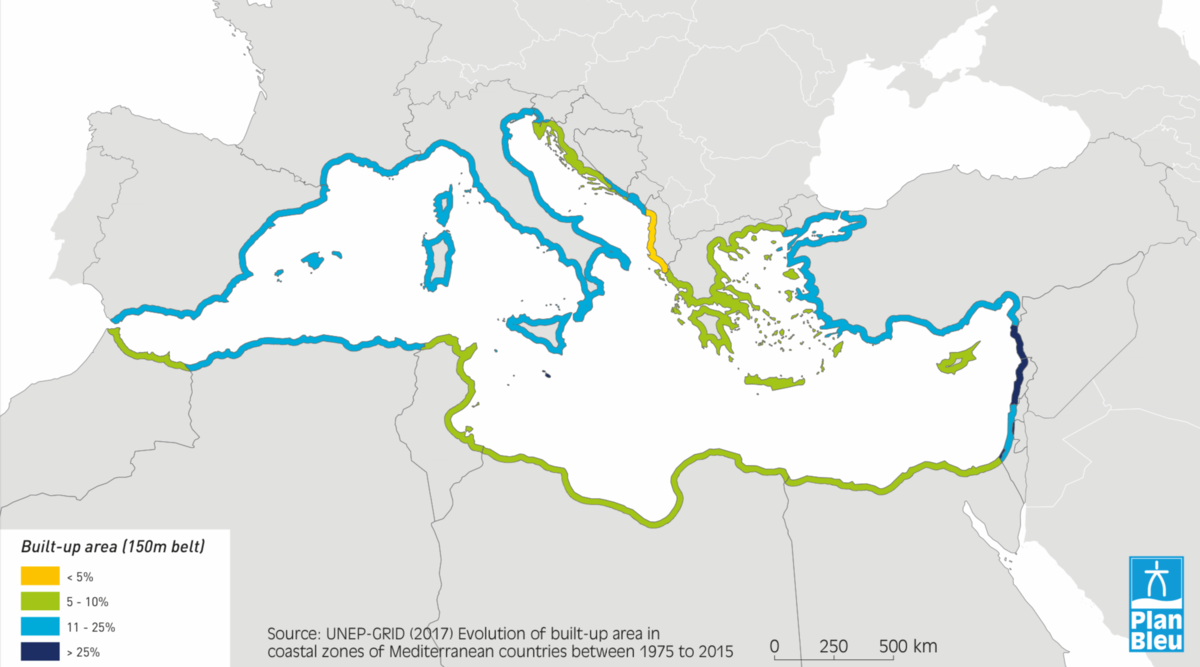Sea & Coast — Maps illustrating the relationship between pressures from human activities and the environmental states
Population settlement in the Mediterranean
Continuing urbanization is accompanied by an increase in the number of inhabitants in Mediterranean metropolises…
In Mediterranean countries, one out of three people live in a Mediterranean coastal region. The share of the coastal population ranges from 5% in Slovenia to 100% in island countries (Cyprus, Malta) and Monaco. Coastal urbanization is partly driven by tourism, with Mediterranean countries hosting around 360 million international tourist arrivals (ITAs) per year, representing around 27% of world tourism in 2017 (UNWTO, 2019), largely concentrated in coastal zones and in the summer months.
Submarine cables in the Mediterranean (2019)
In the Mediterranean, the seabeds are carpeted with digital cables and bundles of fibre optic cables. For the main global telecommunications operators, and more recently the GAFA (Google, Amazon, Facebook, Apple),…
the Mediterranean seems to be a key location for laying cables to satisfy the rising demand of national customers and interconnect with the “intangible” flows of a globalized economy while the submarine cable network densifies, the digital divide remains important across the Mediterranean.
Population living at less than 5 m above sea level within the 100 km Mediterranean coastal belt, per country
With close to 20 million people living at less than 5 m above sea level within the 100 km Mediterranean coastal belt (Schiavina, Freire & MacManus, 2019),…
the exposure of the Mediterranean shoreline to the coastal risk of flooding and erosion is a major challenge, in particular in Egypt (Nile Delta) and Italy (Venice lagoon). In Egypt, more than 11.5 million people live at less than 5 m above sea level within the 100 km Mediterranean coastal belt, while this number is at around 2 million in Italy and around 1 million in Spain, as well as in Tunisia and Turkey (Schiavina, Freire & MacManus, 2019).
Main oil spills in the Mediterranean Sea 1977-2017
Incident rates, especially incidents involving oil, have decreased globally, including in the Mediterranean, despite a steady increase in oil and other cargo volumes transported by ship.
The number of incidents involving oil spills as a proportion of the total number of incidents dropped from 56% for the 1977 – 1993 period to 40% for the 1994 – 2013 period.
Pollution hot spots and areas of environmental concern on the Mediterranean coast
The main types of pollutants in the Mediterranean are oxygen-depleting substances, heavy metals, persistent organic pollutants (POPs), hydrocarbons, microorganisms, nutrients introduced by human activities and marine litter.
The map shows pollution hot spot areas and areas of major environmental concern.
Overview of the noise hot spots in the ACCOBAMS area
The positions of 1,446 harbours, 228 drilling platforms for hydrocarbon exploitation, 52 wind farm projects, 830 seismic exploration areas, several military areas,…
and 7 million vessels were recorded in the 2015-2016 ACCOBAMS study on areas of potential conflict with cetacean conservation. The results revealed several noise hotspots overlapping with important cetacean habitats such as the Pelagos Sanctuary, the Strait of Sicily, and the upper portion of the Hellenic Trench. These results provide strong evidence of multiple stressors acting on the marine environment and of the need for urgent management and conservation actions.
Estimate of annual specific plastic flows (kg/m3) discharged by watersheds into the Mediterranean Sea
In most Mediterranean countries, the root causes of plastic pollution are found in the increase of plastic use, unsustainable consumption patterns, ineffective/inefficient waste management and loopholes in plastic waste management.
Plastic ranges from 5% (Morocco), to 14% (Israel) of the total waste generated (World Bank in UNEP/MAP, 2015). Inputs of plastics into the sea, as estimated in 2015, are at the level of over 260,000 tonnes per year or 730 tonnes per day, depending on the coastal population, which may vary depending on the country, representing more than 2% of the total inputs in the world’s oceans. At the level of Mediterranean watersheds, another study (Weiss et al. 2019) modelled plastic flows into the Mediterranean Sea, as shown in the map.
Built-up area in the 150 m coastal belt in the Mediterranean, 2015
The lowest density of the coastal built-up area in 2015 was mostly found within the 10-kilometre coastal zone, in the following countries: Bosnia and Herzegovina (0.6%), Morocco (2.8%), Montenegro (3.3%), Greece (3.5%), Croatia (3.6%), Albania (3.7%) and Cyprus (4.2%).
Most of these countries are also the countries with the biggest difference in the percentage of a built-up area within 10 km compared with the 150 m coastal belt. Bosnia and Herzegovina and Greece are the only countries in the Mediterranean where the percentage of built-up area within the 150 m belt is higher than in the 1st kilometre. This is particularly significant for Greece, since it alone holds 33% of all Mediterranean coastline.

